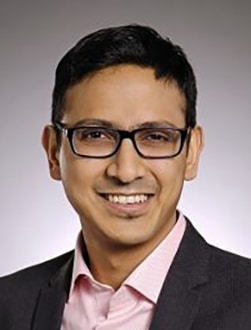Biography
Kaushik Sengupta (Senior Member, IEEE) received the B.Tech. and M.Tech. degrees in electronics and electrical communication engineering from the Indian Institute of Technology Kharagpur (IIT Kharagpur), Kharagpur, India, in 2007, and the M.S. and Ph.D. degrees in electrical engineering from the California Institute of Technology (Caltech), Pasadena, CA, USA, in 2008 and 2012, respectively. He joined the Department of Electrical and Computer Engineering, Princeton University, Princeton, NJ, USA, as a Faculty Member, in 2013, where he is currently an Associate Professor and the Director of the Integrated Microsystems research Lab. His current research interests include high-frequency ICs, electromagnetics, and optics for various applications in sensing, imaging, and high-speed communication.
Dr. Sengupta received the DARPA Young Faculty Award in 2018, the Bell Labs Prize in 2017, the Young Investigator Program Award from the Office of Naval Research in 2017, the E. Lawrence Keys, Jr. Emerson Electric Co. Junior Faculty Award from the Princeton School of Engineering and Applied Science in 2018, and the Excellence in Teaching Award in 2018 nominated by the Undergraduate and Graduate Student Council in the Princeton School of Engineering and Applied Science. He was a recipient of the Charles Wilts Prize in 2013 from Electrical Engineering, Caltech, for the best Ph.D. thesis, the Caltech Institute Fellowship, the Prime Minister Gold Medal Award of IIT in 2007, and the inaugural Young Alumni Achievement award from IIT Kharagpur in 2018. He was a co-recipient of the IEEE RFIC Symposium Best Student Paper Award in 2012, multiple best student paper awards in IEEE IMS, and the 2015 Microwave Prize from the IEEE Microwave Theory and Techniques Society. He served as the Chair for Emerging Technologies for IEEE Custom Integrated Circuits Conference (CICC), in the steering committee of the IEEE International Microwave Symposium, and is currently the co-chair of the IEEE Solid-state Circuits Direction Society, and in the technical program committee for ISSCC Technology Directions. He served as a Distinguished Lecturer for the IEEE Solid-State Circuits Society from 2019 to 2020. He is serving as a Distinguished Lecturer for the IEEE Microwave Theory and Techniques from 2021 to 2023. He was also a recipient of the Outstanding Young Engineer Award from IEEE Microwave Theory and Techniques in 2021 and the IEEE Solid-State Circuits New Frontier Award in 2022.
Presentations
Terahertz Chip-Scale Systems: A New Design Paradigm
Silicon-based Terahertz systems is a field that is only about a decade old. In this time, we have seen a phenomenal growth of silicon systems operating at THz frequencies for a wide range of applications in sensing, imaging and communication. It can be argued that both the ‘THz gap’ and the ‘technology and applications gap’ is closing in meaningful ways in the THz range. Technologies beyond 100 GHz focusing on sensing, imaging and wireless back-haul links are getting attractive as we enter into a new area of highly dense network of autonomous systems requiring ultra-high speed and reliable links.
In order to move beyond this inflection point as Moore’s law continue to slow, I will discuss why we need to look beyond the classical ‘device’-level metrics of efficiency and sensitivity of THz sources and detectors towards holistic ‘system’ level properties such as scalability and programmability. Such properties are critically important for applications in sensing and imaging, as evidenced across sensor fusion technologies across mmWave, IR and optical frequencies. In this talk, I will highlight approaches that cut across electromagnetics, circuits, systems and signal processing, to allow for such reconfigurability in THz signal synthesis and sensing, yet realized with devices that are themselves not very efficient. Particularly, we will demonstrate approaches to THz beamforming arrays, CMOS sensors reconfigurable across the three field properties of spectrum (100 GHz-1000 GHz), beam pattern and polarization (Nature Comm’19), programmable THz metasurfaces with CMOS tiling (Nature Elec’20), and enabling dynamic spectrum shaping (ISSCC’21, JSSC’21) and physically secure sub-THz links (ISSCC’20, Nature Elec’21). In the end, I will comment on what could be the major directions for the field in the coming decade.
